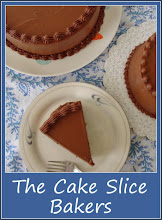 Woooooooo! It’s Halloween.
Woooooooo! It’s Halloween.Despite not ever really celebrating Halloween I do enjoy the chance it gives me to get creative and make some spooky themed treats. Last year I decorated some gingerbread men to look like skeletons for my family and I had such fun drawing on their bones with royal icing that I decided to do the same this year for the Monday Munchers at work.
After cutting out a few gingerbread men I began wondering what else I could do to fit in with the Halloween theme. They only other cutters I had were round but I cut out some circles and decided I could always draw/pipe spooky characters on top of them once baked. This worked well and I ended up with:
Skeletons


Zombies

Pumpkins, ghosts and spiders

The biscuits have a lovely autumnal warming smell and taste, as not only do they contain ginger but also cinnamon and a pinch of cayenne pepper to add a lingering warmth. They are crisp and a little brittle once baked but after a few hours they soften to a give a firm and slightly chewy biscuit. They were a huge success at work. At first people thought they were ordinary gingerbread men but they got very excited when they realised they were skeletons and pumpkins.
This poor zombie looks rather startled to have lost his leg.

Another treat I had intended to make but never got round to was dead mans finger cookies. These involve making the same vanilla dough hat is used to make vanilla crescent cookies, only this time you shape them into individual finger shapes and insert a slivered almond into the tip to look like a fingernail. You can also add knuckle detail using a fine skewer or cocktail and once baked you have pale, soft finger cookies. Imagine being offered one of those with your coffee, creepy.
However you choose to celebrate Halloween I hope you have a good time.
Spooky Halloween Gingerbread
 Ingredients
Ingredients400g plain flour
1 tsp baking powder
2½ tsp ground ginger
1tsp cinnamon
Pinch cayenne pepper
160g butter
130g caster sugar
3 tbsp golden syrup
1 egg
Method
Sift the flour, baking powder and spices into a large bowl. Chop the butter into cubes and add to the flour along with the caster sugar.
Rub everything together using the tips of your fingers, as if you were making crumbles, until no large clumps of butter are left and everything is well mixed.
Mix in the egg and the golden syrup with a butter knife and then work it into a ball using your hands.
Warp in cling film and place ion the fridge to firm up for at least 30 minutes.
Meanwhile preheat the oven to 180C and line a large baking tray with greaseproof paper.
Cut the dough in half (just because it’s easier to work with) and roll out until around 5mm thick.
Cut out your shapes of choice, place on the baking tray and bake for 10-12 minutes until golden brown. Transfer to a wire wrack to cool and continue cutting and baking more biscuits with the rest of the dough.
Once cool, decorate in your style of choice using either royal icing or melted chocolate. Allow the icing to set before storing in an airtight container.
I made 24 spooky biscuits.
Just for fun I played around with one of my photos and managed to make the background go black. This made the icing on the biscuits really stand out and made the skeletons look REALLY spooky.

P.S. I emailed my pics to work and came in early - thankfully they uploaded - Yay!






 For the custard
For the custard







 For the pastry
For the pastry



 A few option stamens can then we added into the centre of some flowers. You can then add detail or colour to the flower top. I found this method quite difficult as I couldn’t attach my flowers to the wire very easily (I don’t think my paste hump was big enough) and the edges of my flowers ended up a little scruffy. But it was only a first attempt.
A few option stamens can then we added into the centre of some flowers. You can then add detail or colour to the flower top. I found this method quite difficult as I couldn’t attach my flowers to the wire very easily (I don’t think my paste hump was big enough) and the edges of my flowers ended up a little scruffy. But it was only a first attempt.

 By the end of the class we were able to group all our flowers together in a bunch and secure the ends using florists tape. I was quite pleased with my little bunch of flowers. It’s amazing how adding a bit of colour can enhance an otherwise dull and rather scruffy looking flower. For our homework that week we had to make a Madeira cake which we would then decorate with our flowers next week.
By the end of the class we were able to group all our flowers together in a bunch and secure the ends using florists tape. I was quite pleased with my little bunch of flowers. It’s amazing how adding a bit of colour can enhance an otherwise dull and rather scruffy looking flower. For our homework that week we had to make a Madeira cake which we would then decorate with our flowers next week.

 Apologies for some of the photos. Its always been dark when I’ve got home and taken them.
Apologies for some of the photos. Its always been dark when I’ve got home and taken them.
 Ingredients
Ingredients




